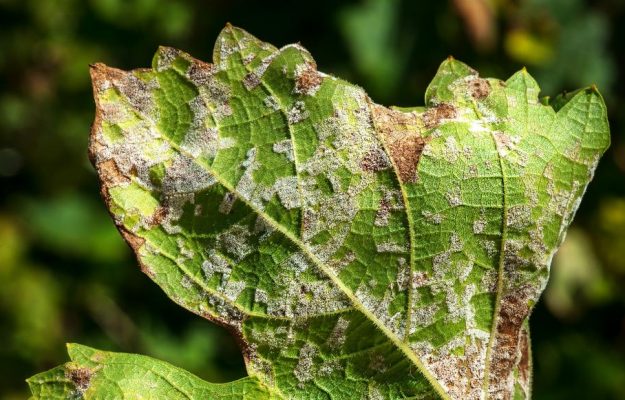It is not just drought that has Italian viticulture trembling, but the excesses of a climate that is increasingly difficult to predict, the consequences of which - both short- and long-term - are likely to prove dramatic. Thus, after the record heat of 2022, it is now the consequences of the incessant rains that fell in May and June that are worrying winemakers in Italy. First of all, Downy mildew, which, as three of the greatest international experts on the subject - professors from the University of Milan Attilio Scienza and Leonardo Valenti and Adriano Zago, a point of reference in biodynamic viticulture - told WineNews, has found the perfect climate to take root, especially in the Adriatic regions (Puglia, Abruzzo and Molise), but the presence is also important in Basilicata, Umbria, Lazio and Tuscany, while the regions of Northern Italy, more accustomed to dealing with it, seem destined to pay a lower price. It is difficult, at the moment, to make precise estimates, although the Observatory of Unione Italiana Vini (Uiv), speaks of losses for the next harvest campaign of up to 40%, with organic viticulture being severely compromised in some areas.
“Doing a quick reconnaissance of the Italian vineyard, where there has been a failure to treat at the right time, conditions are disastrous, unlikely to harvest even a single bunch of grapes”, warns Leonardo Valenti, professor of viticulture at the University of Milan. “The situation, from Basilicata to Tuscany, is complicated in many vineyards, and it is no better in Sicily. In central and southern Italy, people are less used to having to deal with Downy mildew, and it often happens that the pathogen gets the upper hand. To take a census, and understand the extent of the damage, it will take another fortnight, but there are situations that are difficult to recover, which could also affect the next harvest”.
Something, beyond the exceptional rainfall of the past few weeks, has gone wrong with vineyard management. “It was assumed that last summer’s temperatures had deactivated the inoculum, and instead this was not the case, it was simply low, and it grew exponentially in relation to the seasonal trend decidedly favorable to the development of the disease. In this situation it is understandable that the winemaker delayed the intervention, but it turned out to be a catastrophic step”, Leonardo Valenti continues. “Downy mildew is treacherous: when it’s cold and rainy the incubation time is quite long (at least two weeks), at first it seemed everything had gone well, but when the disease showed itself it did so in a very strong way, catching producers unprepared”.
A disaster, not too heralded, but one that teaches something, which is “to keep our guard up at all times, regardless of the weather forecast and the expectations we place on ourselves. We need consistent control programs to safeguard production, and quick responses, because wait-and-see has brought no good, and long-term forecasts are not reliable”. And the emergency does not end there; in addition to Downy mildew, it also concerns powdery mildew, “which has the ability to infect plants like wildfire, in an all-too-predictable manner”, Valenti clarifies, stressing that production, however, “is expected to grow greatly compared to 2022, and this could mitigate the effects of vine diseases: fertility is excellent, and consequently the number of clusters, we could eventually find ourselves in a balanced situation”. Especially considering that wine stocks, in Italian wineries, are at unprecedented levels.
Taking a step back, Downy mildew, as Professor Attilio Scienza, one of the world’s leading experts in viticulture and oenology, explains, “had initially caused only leaf damage, but now we are seeing the first desiccation of the bunches. The fungus entered the cluster during flowering, has been dormant for a few weeks and will become very conspicuous at veraison, when the real damage count will be done. There will be no leaf area problem, because we are coming from a very rainy season, and the plants have very developed canopies, which, however, have fostered a very humid environment, in which Downy mildew has proliferated. So has powdery mildew, which does not need rain, but needs moisture and high temperatures. The ideala would be to uncover the clusters a bit, but being careful not to expose them to burns”.
In hindsight, Professor Scienza resumes, “one should have induced the production of the females with early topping, so as to remove some leaves around the clusters while leaving the females to protect the cluster. The topping would also have been necessary and important to remove the youngest part of the foliage, which is also the most susceptible to Downy mildew, another element of contagion. The greatest damage is on the Adriatic side, so Abruzzo, Molise and Puglia, but now symptoms are also being seen in Tuscany, especially in Maremma. Tremendous difficulties are then recorded in vineyards conducted organically, where there has been the need to treat continuously, even 17 times, and to enter yielding and often impassable soils”.
For Attilio Scienza, too, it was essential to give “timely responses, using highly effective products, not just copper, which is a cover product. In a season like this there was a need for curative products, capable of helping the vine plant even with the infection in place”. Also important was the varietal aspect, because “not all reacted in the same way. In Maremma, for example, Alicante had very serious damage, Sangiovese less so. The Atlantic varieties - Merlot and Cabernet Sauvignon - are not very susceptible to Downy mildew”.
Beyond chemistry or biological solutions, the best solution, according to Attilio Scienza, is in resistant varieties, “which needed only two or three treatments, sometimes not even that, to overcome the Downy mildew threat unscathed. Resistant varieties already exist in many typical varieties in Northern Italy, but not in the South, and situations such as the one we are facing should speed up the experimental process-carried out by nurseries and universities-and bring the green light for breeding resistant varieties closer to all Regions and Denominations. The biggest problem, as of today, is precisely the impossibility of planting these tolerant varieties, which is also holding back research on native resistant varieties, which would allow us to have clones capable of giving high quality grapes without fear of disease, following the example of the path already started by France”, Professor Scienza concludes, recalling that “the ones who will pay the heaviest bill, in this situation, will be the wine growers, and not the companies, which currently have full cellars and with a drop in production could still guarantee important bulk prices”.
As mentioned, the moment is complicated, but according to Adriano Zago, a degree in Agriculture from the University of Padua and a specialization in Viticulture and Oenology from Montpellier, and an agronomic and oenological consultant for 20 years, “there are no big differences between vineyard management systems-organic, biodynamic or conventional-if anything, the difference is between winegrowers who have done well and winegrowers who have not. The use of copper, according to the EU regulation, is limited to an average of 4 kilograms per hectare, over a 7-year period, and coming from years when very little was used, there is absolutely enough margin to work well, especially because today we work with active branches at much lower amounts than before: if 500 grams per hectare was once used for each treatment, today we manage to have good defenses with 150 grams of copper per hectare. Besides, copper is but one of many tools at our disposal, along with many corroborants, plant defense advocates, techniques and technologies that are much better performing than they used to be, and awareness in vineyard management. For that matter, the traditional method has not shown its limits either: it has not guaranteed perfect defense, and it has brought long-term environmental damage, to soils, insects and people”.
What remains in the field is a vintage “that is already producing important production losses, especially on the Adriatic, from Puglia to Romagna, but Tuscany is not in great shape either, while the North is more accustomed to such weather patterns, with a cold and wet spring, and more in trouble, if anything, in the face of the drought of recent years. Still, similar vintages, 15 years ago, would have brought even greater disasters”, Adriano Zago continues. “We know a great deal, almost everything, about Downy mildew and its detection, as well as about the effectiveness of many products, but the real challenge is to fight it in conditions like those of this year, where it is difficult to enter the vineyard. It had been many years since, even in organic, there had been such important and generalized losses, so it means that, in other years, in their diversity, the methods adopted and that we know well are working. The bank jumped because during flowering there was also 200 ml of rain, and more than half of the rainy days, which is the worst situation for a winemaker in May: the perfect storm”.
Such vintages, as seen, nevertheless have a positive side, in their own way, because they can turn out to be “formative, but do not think now that the climate of the last few years was perfect, because drought and extreme weather events, such as drought and hailstorms, as well as Flavescence Dorata and Esca disease, are certainly not the norm. Moreover, the current conditions are also ideal for powdery mildew, and in front we are looking at a delayed harvest and a very long and complex season to manage, a Marathon rather than a race as we were in recent years, when forecasts and balances of the vintage were already being made at this time”, concludes agronomic and oenological consultant Adriano Zago.
Copyright © 2000/2025
Contatti: info@winenews.it
Seguici anche su Twitter: @WineNewsIt
Seguici anche su Facebook: @winenewsit
Questo articolo è tratto dall'archivio di WineNews - Tutti i diritti riservati - Copyright © 2000/2025

























































































































































































